In Search of a Truly Comfortable Seat: Mazda Aims to Impress Drivers with Its Car Seat
Engine and chassis performance as well as beautiful vehicle form are critical to any Mazda models featuring SKYACTIV TECHNOLOGY and the famous KODO Design. Yet, every member of Mazda’s R&D community remembers that a driver is always “seated” in a car when he or she drives. Because a car seat holds the largest area of a driver’s body, the community knows that the seat plays a critical role in creating a truly comfortable, stress-free driving experience.
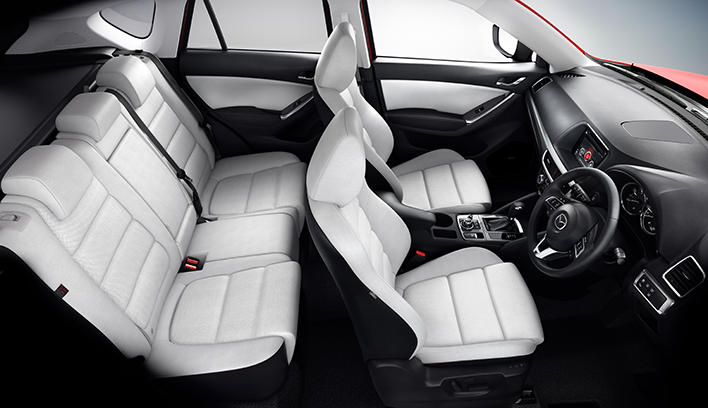
The first step in Mazda’s R&D team’s quest for their ideal car seat is called a Seat Feeling Evaluation. The voices of Mazda users as well as feelings and impressions voiced at test driving sessions in overseas locations are checked one by one. The team members begin by reproducing different feels mentioned by the users and the test drivers such as “the seat felt stiff” and “the seat caused back ache”.
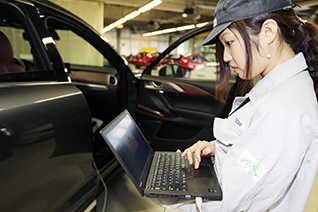
Those abstract feels are experienced by the members who then proceed to quantify those feels. Through the important quantification process, all the feels are translated into car seat specifications - the length and elevation in millimetres, pressure distribution and the degree of resilience. The members also experiment physical feels created by different specification patterns with their own body, and identify the best-possible combination of car seat specs. You may think that 1 or 2 millimetres would be negligible, but the tiny difference generates a significant impact on how the difference is perceived by the human body. Translating human feels into the car seat specifications for commercialization is far from easy, its complexities and subtleties are beyond a mere mortal’s imagination.

(Placing the exclusive mat to quantify the seat feelings and impressions)
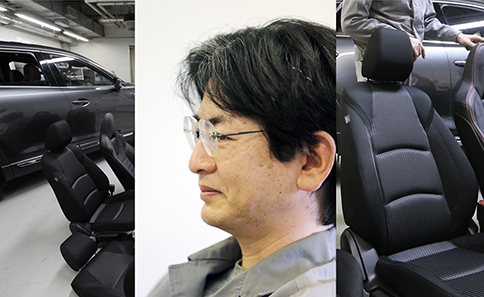
(Masato Shimada, Master seat engineer)
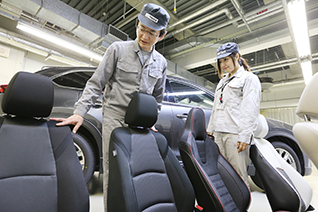
The seat also plays an important role in Mazda’s ongoing pursuit of “Jinba- Ittai”. Mazda knows that driving a car in a totally relaxed posture, without any unwanted tension in a driver’s body muscles, is the best way to control the car. But a totally relaxed body, without any support, may lack stability from time to time which causes difficulty in controlling the car and reduces the fun of driving. That is why every Mazda gets a car seat designed to support the driver’s body core so that his or her core remains stable throughout the driving experience.
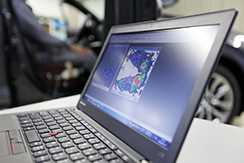
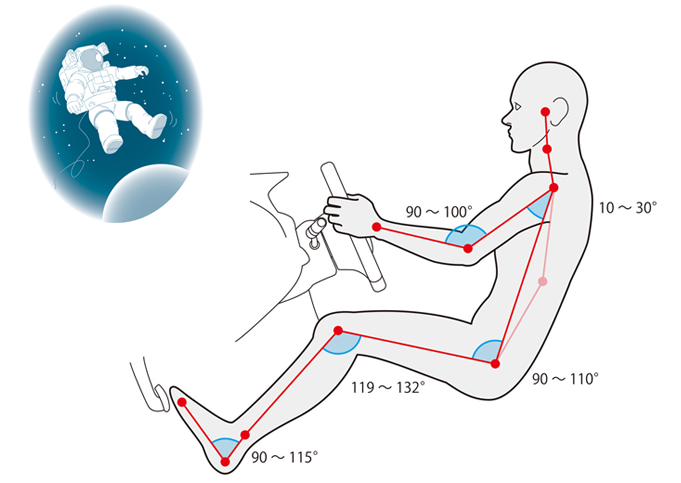
(Through extensive studies on human body, Mazda discovered that certain angles of body joint links enable driver to naturally and quickly use force. Those “joint link angles” were inspired by an astronaut’s body posture in the zero-gravity space. Mazda believes that the naturally-relaxed body posture without any unnecessary muscle tension is critical for the driver to make an instantaneous transition to the next driving operation.)

When driving corners, Mazda’s car seat becomes a support structure that wraps the driver’s upper body with the entire seat. The lateral force on the driver’s body at turns are supported by a surface that covers a wider area of the driver’s upper body to reduce physical fatigue. The driver’s back and waist are supported horizontally and laterally, since reducing support to his or her back and waist puts those body parts under more physical stress. Balancing fatigue reduction and excellent body fit is one of the secrets of Mazda’s car seat.
Another unique aspect of Mazda’s Seat Feeling Evaluation is that it involves many female R&D members whose feels are critical to the Evaluation’s success. Every car produced at Mazda gets the same car seat, which means that the seat needs to satisfy every customer regardless of age, gender and build.
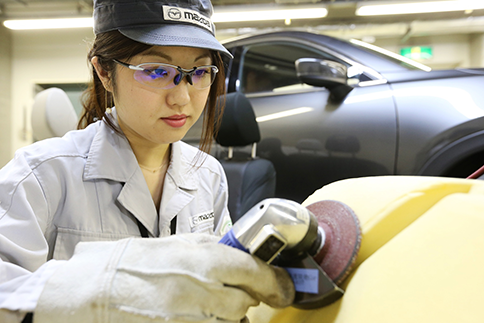
(Yuina Ashihara, Seat Engineer)
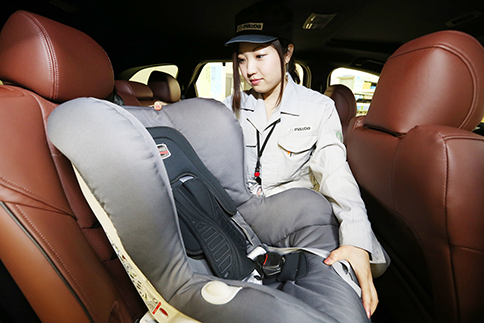
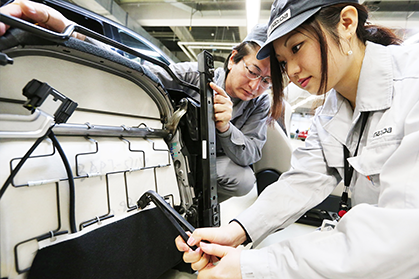
One thing that the R&D team discovered, for instance, is that many women tend to lack confidence in driving, causing them to adjust the seat back to an upright position. Driving with the upright seat back causes a driver to lean forward which, in some cases, may cause the driver to perceive that the side space is tighter than it actually is. This is where the female members’ sensibilities are relied upon.
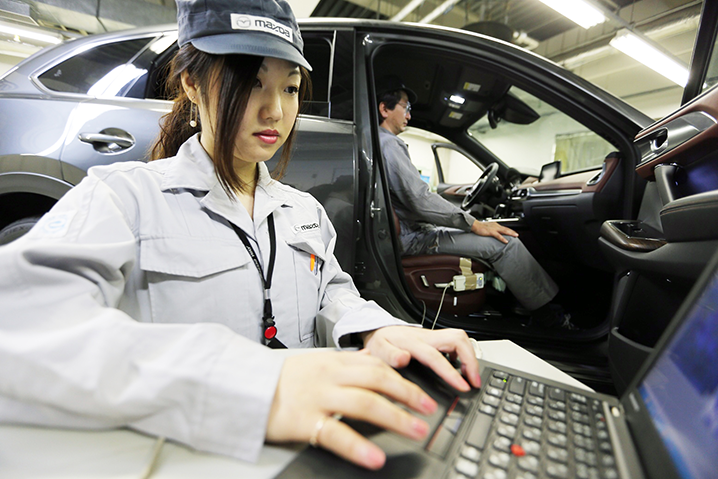
All the R&D team members involved in the Seat Feeling Evaluation share and voice their passion for developing a car seat that impresses a customer when he or she is seated inside a Mazda – a seat that makes him or her want to drive again and again. Those members demonstrate that Mazda’s emotional, human-centered car development approach in its ongoing pursuit of “Celebrate Driving” is fully applied to its car seat development.
Other Stories
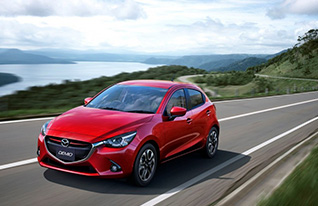
Driving stories on the great & challenging roads and journeys

Stories about the craftsmanship and design evolution of Mazda

Visions and philosophies of Mazda engineers
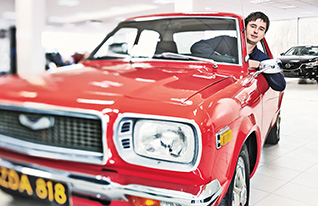
The spirit of Mazda owners, collectors, clubs and aficionados around the world

Mazda brand heritage and history

